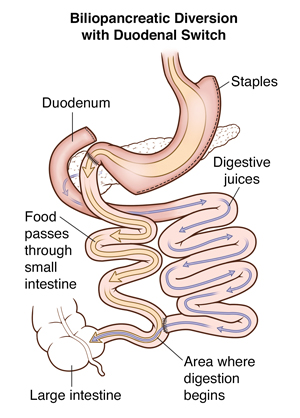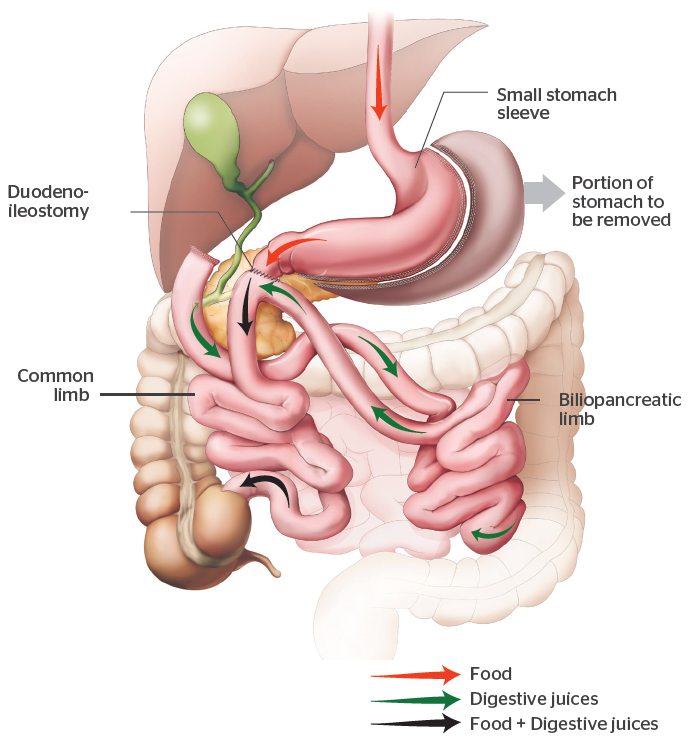Adjustable Gastric Band or Lap Band Surgery
AGB works mainly by decreasing food intake. Food intake is reduced by placing a small band around the top of the stomach to restrict the size of the opening from the oesophagus to the stomach. The surgeon can then control the size of the opening with a circular balloon inside the band. This balloon can be inflated or deflated with saline solution to meet the needs of the patient.
Our practice doesn’t offer Adjustable Gastric Band/Lap Band because…
The majority of patients do not have good results from this procedure because of its many disadvantages and complications. Many studies have shown that more than half of the gastric bands are removed due to inadequate weight loss or complications after 7-10 years.

Biliopancreatic Diversion with a Duodenal Switch
BPD-DS, usually referred to as a “duodenal switch,” is a complex bariatric surgery that includes three features. One feature is to remove a large part of the stomach. This step makes patients feel full sooner when eating than they did before surgery. Feeling full sooner encourages patients to eat less. Another feature is re-routing food away from much of the small intestine to limit how the body absorbs food. The third feature changes how bile and other digestive juices affect the body’s ability to digest food and absorb calories. This step also helps lead to weight loss.
In removing a large part of the stomach, the surgeon creates a more tubular “gastric sleeve”. The smaller stomach sleeve remains linked to a very short part of the duodenum, which is then directly linked to a lower part of the small intestine. This surgery leaves a small part of the duodenum available to absorb food and some vitamins and minerals.
However, when the patient eats food, it bypasses most of the duodenum. The distance between the stomach and colon becomes much shorter after this operation, thus limiting how food is absorbed. BPD-DS produces significant weight loss.
However, a decrease in the amount of food, vitamins, and minerals absorbed creates chances for long-term problems. Some of these problems are anemia (lower than normal count for red blood cells) or osteoporosis (loss of bone mass that can make bones brittle).

Single anastomosis duodeno–ileal bypass with sleeve gastrectomy (SADI-S)
The SADI-S is a type of type of bariatric surgery with a single surgical anastomosis. It has a restrictive component when reducing the greater curvature of the stomach, but specially a malabsorptive component, as the common channel is also reduced. The objective of this surgical technique is to lessen the intestinal loop where nutrients are absorbed.
A duodeno-intestinal anastomosis is carried out, 250 centimetres (98 in) from the ileocecal valve. Therefore, the common channel where nutrients are absorbed becomes 2.5 metres (8.2 ft) long.


